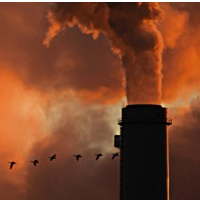Study Indicates Air Pollution Poses Fire Risk in Santa Monica Mountains
 (photo: Associated Press)
(photo: Associated Press)
Preliminary results from experiments being conducted in the Santa Monica Mountains suggests that the familiar adage “Where there’s smoke, there’s fire” might easily be adapted to read, “Where there’s pollution, there’s fire.”
The first year of a three-year study by the U.S. Forest Service and University of California, Riverside, found that air pollution harmed native plants in the eastern end of the mountains, fostering growth of non-native grasses. Those grasses are also known as “flashy fuels” because they have been linked to larger, more frequent fires.
“Nitrogen enrichment into ecosystems is probably the third-largest global change driver and driver of loss of biodiversity that we face on the planet,” Irina Irvine, restoration ecologist for Santa Monica Mountains National Recreation Area, told KPCC.
Researchers mapped nitrogen levels (pdf) in the atmosphere at 10 sites and weren’t surprised to find higher levels of nitrogen in the mountain region closest to Los Angeles. Nitrogen levels on the far eastern edge of the mountains were up to three times higher than in the west. Nitrogen in the air can be fostered by industrial, agricultural and vehicular pollution. The high content in the Santa Monicas is generally attributed to cars and trucks.
“What's more intriguing about this study is learning how high nitrogen levels affect native vegetation and what that might mean for fire risk in such a fire-prone region,” Irvine said.
Other studies in California and Australia have made the link between non-native grasses and increased fire activity. But the $100,000 study is trying to determine the so-called “critical load” that vegetation can take in transition.
–Ken Broder
To Learn More:
Air Pollution May Boost Fire Risk in Local Mountains (by Jed Kim, KPCC)
Study Suggests Air Pollution in the Santa Monica Mountains Is Harming Native Plants, Increasing Fire Risk (National Park Service)
- Top Stories
- Controversies
- Where is the Money Going?
- California and the Nation
- Appointments and Resignations
- Unusual News
- Latest News
- California Forbids U.S. Immigration Agents from Pretending to be Police
- California Lawmakers Urged to Strip “Self-Dealing” Tax Board of Its Duties
- Big Oil’s Grip on California
- Santa Cruz Police See Homeland Security Betrayal in Use of Gang Roundup as Cover for Immigration Raid
- Oil Companies Face Deadline to Stop Polluting California Groundwater





